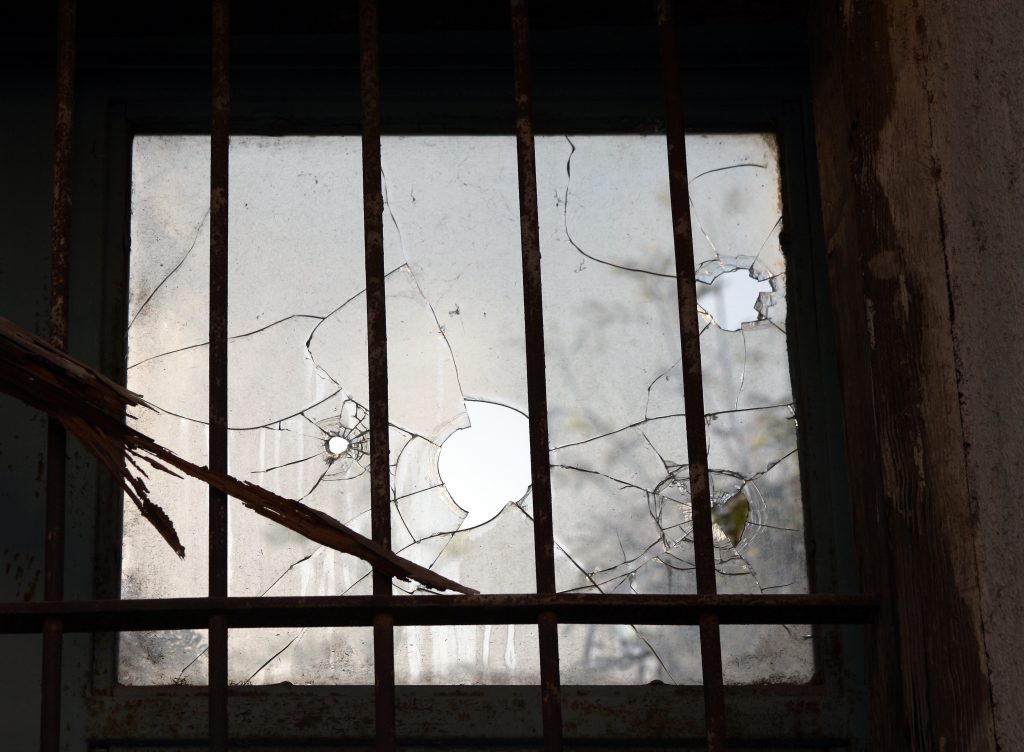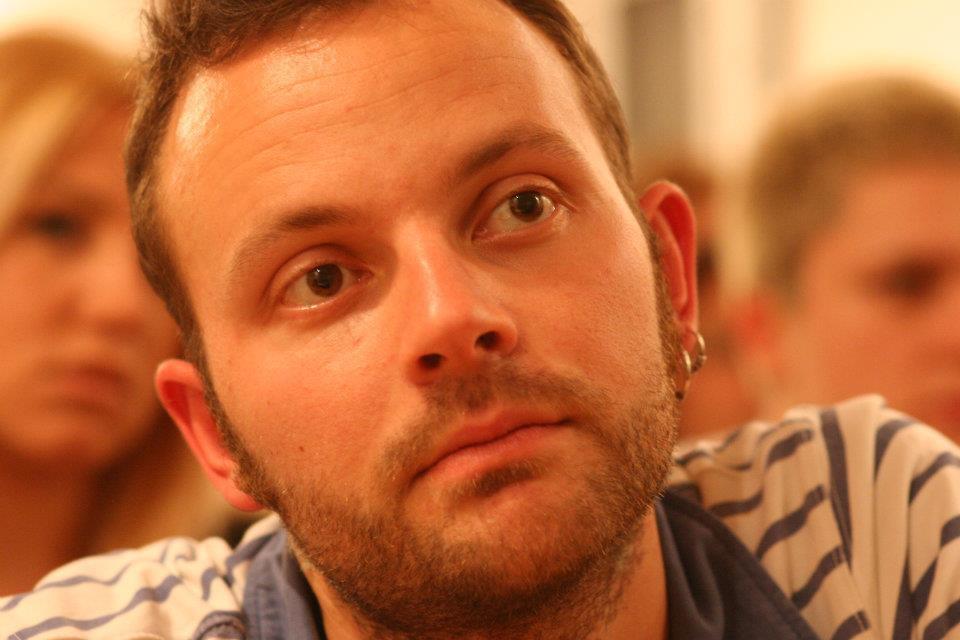Engels once said that the way a capitalist city is organized tends to hide production’s ugliest and most dangerous surplus: poverty. And where it cannot be hidden, it has to be attacked. Could this help explain why the state often seems to be at its most violent when the smallest sums are at stake?

In 2014, police killed Eric Garner over selling a pack of cigarettes on the street: an offense worth maybe a couple of dollars. This spring, we saw George Floyd murdered over (maybe) a fake twenty-dollar bill. And since the first draft of this article was written, yet another working-class Black American has lost his life to such brutal police banality. Rayshard Brooks was questioned over sleeping in his car, and then, after forty-five minutes of intense interrogation and molestation, a police officer shot him in the back. These murders share several common traits: police brutality, the victims’ last words (in the first two cases) and the incomprehensible banality of the alleged “crimes” for which they were killed.
In the USA millions of people have been living in such a brutal environment for decades, one in which, to the state, their lives are worth little or nothing. The situation is especially acute for the descendents of those whom white capitalist America once enslaved–both Black proletarians and those better off who still, on account of their skin color, are reflexively not thought deserving of middle-class status. Fortunately, people of color and the urban poor in the USA have now risen up against these humiliating practices and are not backing down. They are telling us that their lives indeed matter.
But how did those lives come to seem so cheap in the first place? While many would attribute this exclusively to racism (seen as prejudice) and the chauvinism of particular police officers (such as George Floyd’s killer, an officer named Chauvin, no less) or maybe even of the whole police force, others would argue that the perceived legitimacy of police violence is actually located deeper: in the strategic approaches to policing in urban areas that are responsible for all the atrocities now on the table–police brutality, its militarization and its insanely disproportionate reactions to alleged minor crimes and behaviors that are quite benign. In other words, it comes from the very core of the socio-economic system–part of the class war, even.
The time is out of joint
At stake is the “broken window” theory, a mystical and mythical policy proposal authored by James Q. Willson and George L Kelling in 1982. A short short definition of this theory is – for those who do not want to commit to reading the whole paper – that signs of disorder like broken windows, litter, graffiti and other petty crime induce other and often more serious types of crime and disorder. And that those signs of disorder must be dealt with first if we are to maintain order and prevent larger crimes. In short, the paper identifies a small crime as a source of big crime, murders, rapes, thievery, gang wars, etc.
Thus the proposed solution to all crimes and also the recommendation to police force acting in urban areas is that the first small “broken windows” – petty offenses, minor crimes and other “signs of disorder” – are to be dealt with swiftly and with uncompromising force–that is, brutality–because they are identified as a source of all other crime. That is, police have been given a messianic role in ending all crime by brutally dealing with the minor and petty ones.
On the one hand, this strategy sets a dangerous president: brutality is to be inversely proportional to the harshness and seriousness of the crime. And on the other hand, “broken window” targets a very specific set of behaviors. But what this paper “forgot” is that we are dealing not with windows, but with people. And that one’s behavior is often conditioned by one’s existential necessities and deeply embedded in one’s class experience. From the beginning to the end, the “broken window” paper identified behaviors characteristic of people caught on the lower social strata. It has, thus, opened a way to identify class-conditioned behavior as “disorder” and then to treat it as a crime. Identifying small crime as hierarchically higher and more important, the “broken window” theory enabled police force to treat signs of poverty as if they were The Crime itself.
The theory’s impact was profound: it enabled the police to “react” to behaviors that are often nothing more than survival strategies (as was Eric Garner’s) and/or existentially conditioned behaviors, behaviors structured by existential hopelessness; to see (one in particular) class as “disorder.” It enabled police to target the class and race by targeting existentially conditioned practices and often survival strategies. It masked the structural reasons of oppression, letting the structural need to target certain social strata to manifest itself as nothing more than systemic abuse or even just the racism of individual bad apples (which institutions can always disavow), and disabling the struggle against police brutality by presenting the problem as nothing more than problem of individual cops or precincts.
That ever I was born to set it right
The moment when this idea appeared was a good moment for strategies like this: what conservative America thought to be the problem was what they identified as “urban decay” in the form of people of color, hippies, drug users, dirts and punks who were slowly taking the streets of huge cities; as the time that was out of joint. One sentence shows that this was in fact a long-lasting problem for elites: “President emphasized that you have to face the fact that the whole problem is really the blacks. The key is to devise a system that recognizes this while not appearing to,” said H. R. Haldeman, ascribing these words to his close associate, President Richard Nixon (1969-74).
Nixon’s (or Haldeman’s) statement encapsulates the “broken window” theory some ten years avant la lettre. No wonder that one of the unofficial pillars of Reagan’s and other conservative campaigns was often the struggle against punks and dirty hippies. Ultimately, the “broken window” program was not about windows out of their frames, but people out of their perceived (social) places–people who, in the minds of conservative America, had invaded and infested urban environments.
It was this synchronization of reactionary politics on the top level and the desire to discipline and regulate societies from the bottom, especially urban environments, that breathed life into “broken window” policing.
Cities across the United States first implemented this policy in their public transit systems. New York was one of the first to do so, cracking down on graffiti in trains and the practice of jumping turnstiles and otherwise avoiding payment (something we in Eastern Europe are also familiar with[1]). “Broken windows” policing then spread across the urban landscape: crackdowns on petty crime and misconduct, later efficiently backed by stop and frisk tactics, the “three strikes” doctrine, and a racial profiling that also effectively functions as class profiling, but wiithout explicitly identifying any particular class as its target.[2]
The specter of investment
Though invisible, the circulation of capital is at the center of the broken window. While Willson and Kelling play with their mind experiments, people who drink or urinate on the streets and are in other ways being “disorderly” are usually doing so in front of the shop and its owner – disturbing his business with their behaviours. But ultimately with their existence.
The criminalization of benign behaviors and crimes really aims at something else: investment. As Rudolph Giuliani once said – there is a link between investment and urinating on the streets: no one wants to invest in places where people do that! Interestingly: “broken window,” both as theory and practice, attempted to “solve”[3] the problem of what was called “urban decay” or “disorder.” Police brutality and its readiness to brutally react to any sign of people who “should not belong to certain neighborhoods” is an attempt to sanitize urban centers and terraform them for investment. And we have a full circle now: what begins with a (Nixon’s, Reagan’s, conservative…) reactionary disgust at minorities and people of color on the streets, and is than framed as “urban decay” and the time being out of joint–is then treated as crime, which results in the removal of the poor out of the sight of bourgeoisie. And at the end of this, the policy-makers hope, is the central process of capitalism: investment.
But if there is one take-home from this, it is that these policing practices have actually created specific everyday conditions of life for those located in the lower strata. If one is poor, then everything will be watched, anything one does can be treated with brutality. It has, thus, created precarious living conditions for the poor, a bubble in which one is always under threat of police brutality. A complex system of regulation, regulation produced through the notion of “order” specifically aimed at the poor while not appearing to – as it targets something vague as “disorder”. Effectively creating a parallel legal system for the poor and reflecting one iteration of law in capitalism: law as a system of class barriers. If one is poor, the “laws” for minor misconduct and for treating “disorder” are applied. If, however, one is rich – than there is another legal system, full of loopholes and spaces for tax avoidance, and more serious lapses of civic duty. It is thus one mechanism to combat one of the few emancipatory inheritances of liberalism: equality in the eyes of the law. Because let’s face it: if George Floyd had cheated the state by placing his account and company in a tax haven, he would very likely be alive today. And free.

Stefan Aleksić is an anthropologist and a freelance journalist for Masina, Slobodni Filozofski and several other leftist web portals covering a variety of subjects, including but not limited to capitalism and citizenship, migration, policing in urban environments, worker rights in garment industry and others. He is a member of the Clean Clothes Campaign network as regional Urgent Appeal coordinator for Eastern and Southeastern Europe.
[1] One of the key political issues of eastern Europe over the past decades has been the price and availability of public transport. While increases in fair prices are transforming public transport into the semiconductive class membrane – that effectively “allows” the access to urban centers only for those that can withstand the cost of public transport – governments and local officials are constantly increasing pressure on the population. One of the mechanisms: municipal police that is supposed to brutally deal with those that avoid paying for the bus fare. Of course the Roma population is disproportionately targeted as it is the poorest minority that heavily relies on public transportation and usually is too poor to pay the ticket.
[2] And this is – at least in part – the reason behind the militarization of the police force: if one defines more or less everyday behaviors as “crime,” then the whole population is the enemy, and city streets become a battleground. Or in the new army-speak of Trump’s Defense Secretary Senator Mark Esper, “a battlespace.”
[3] “Broken window” obviated the need for a welfarist “war on poverty” as a prime strategic approach to dealing with crime–one of the author’s stated intentions!

